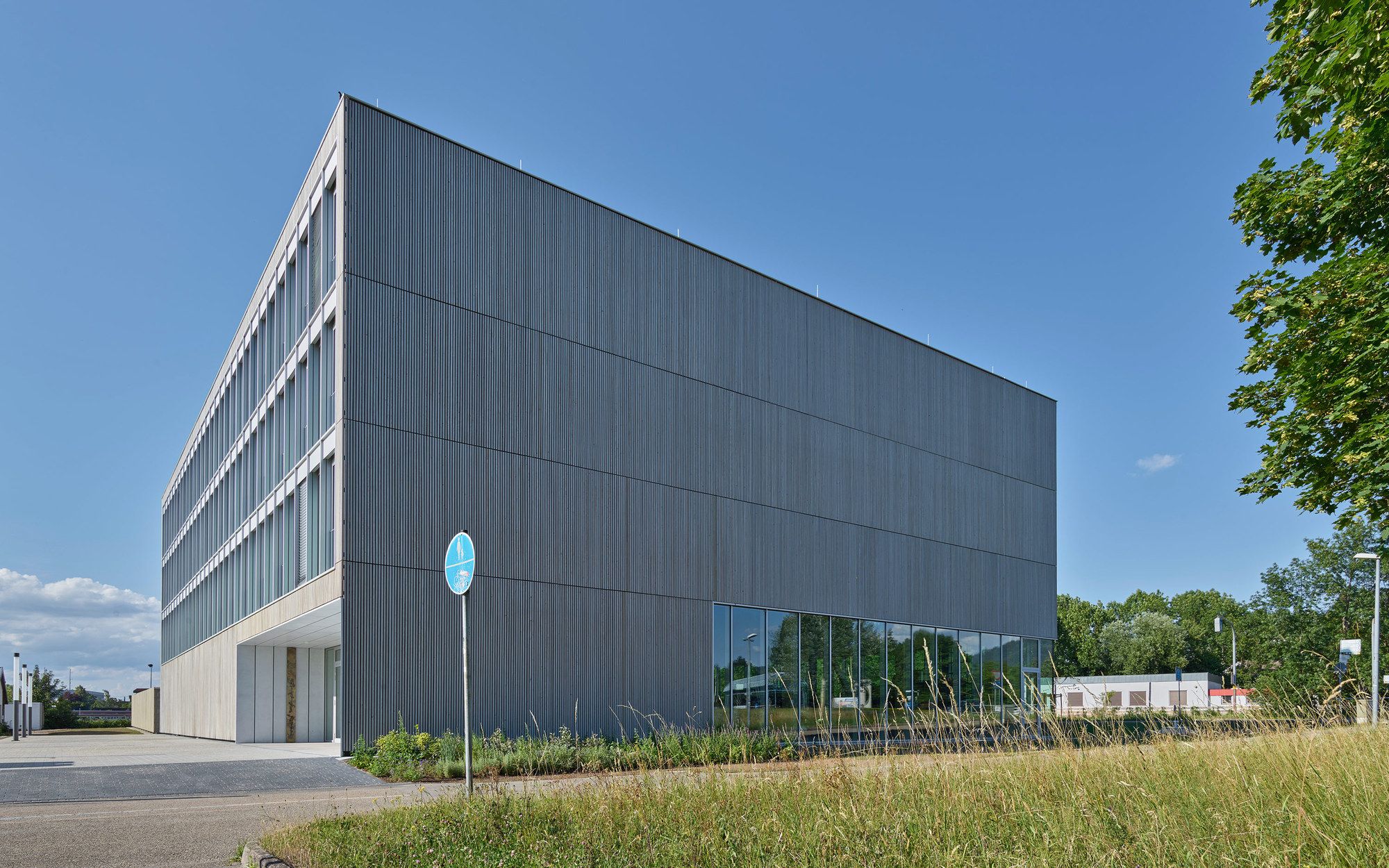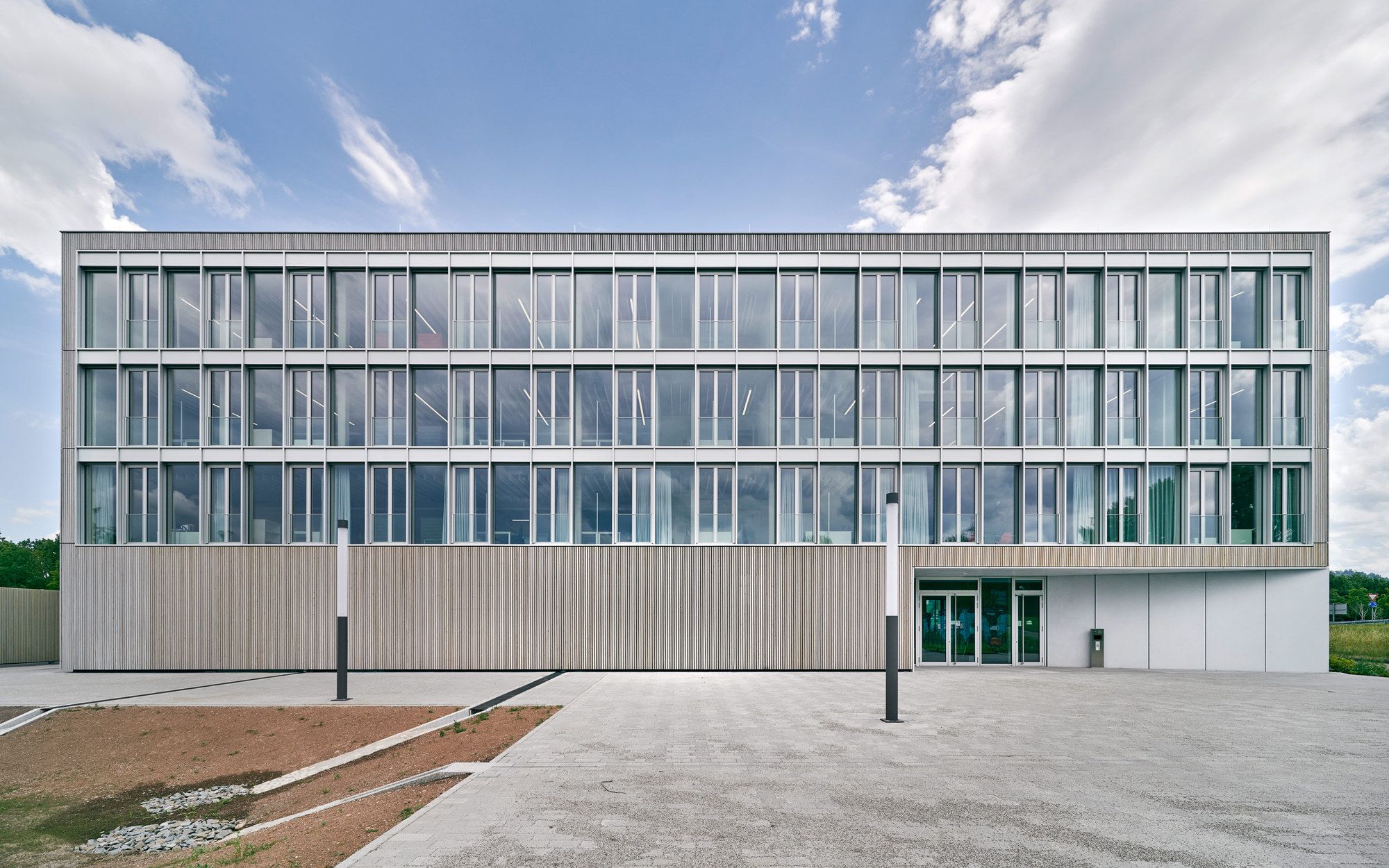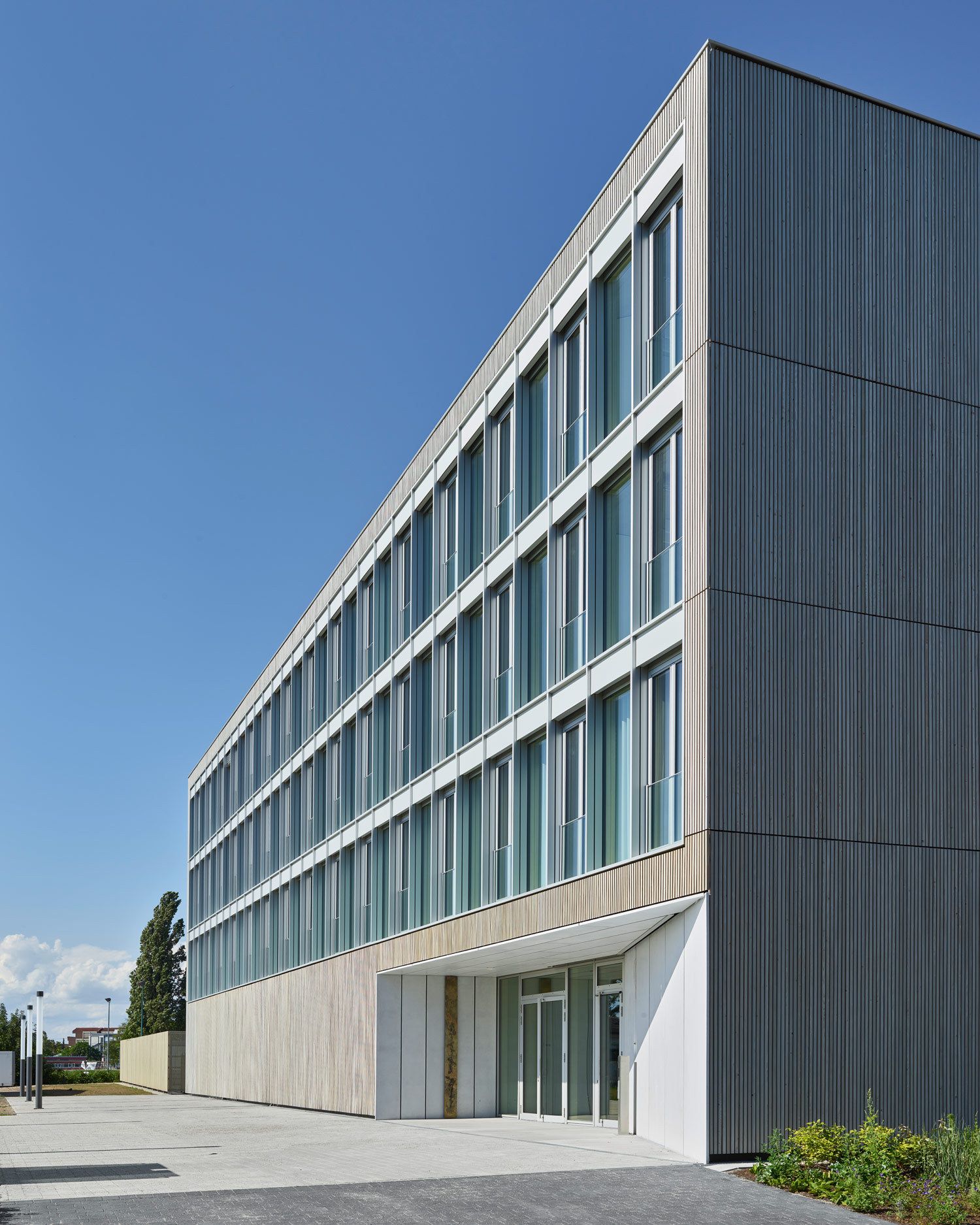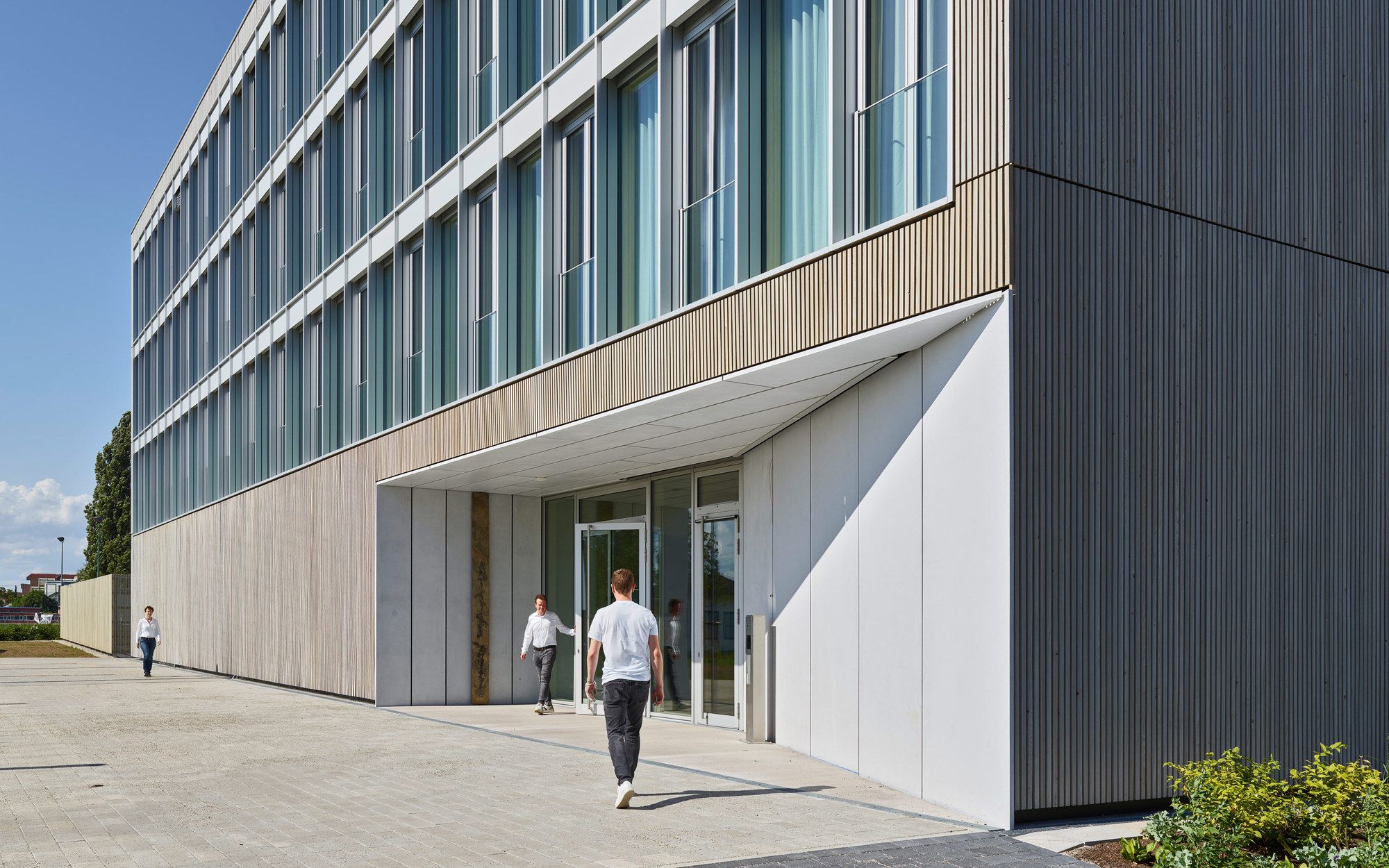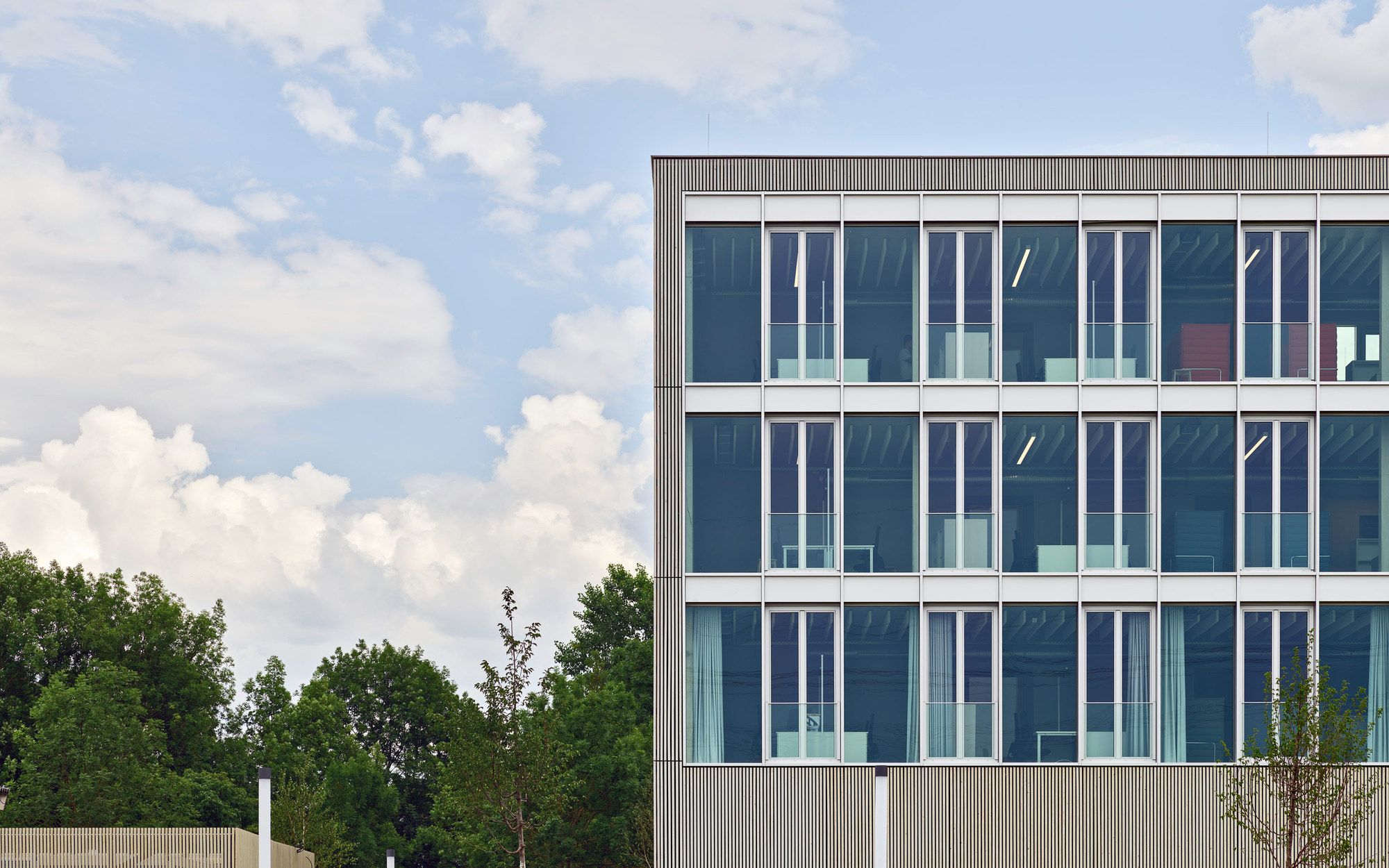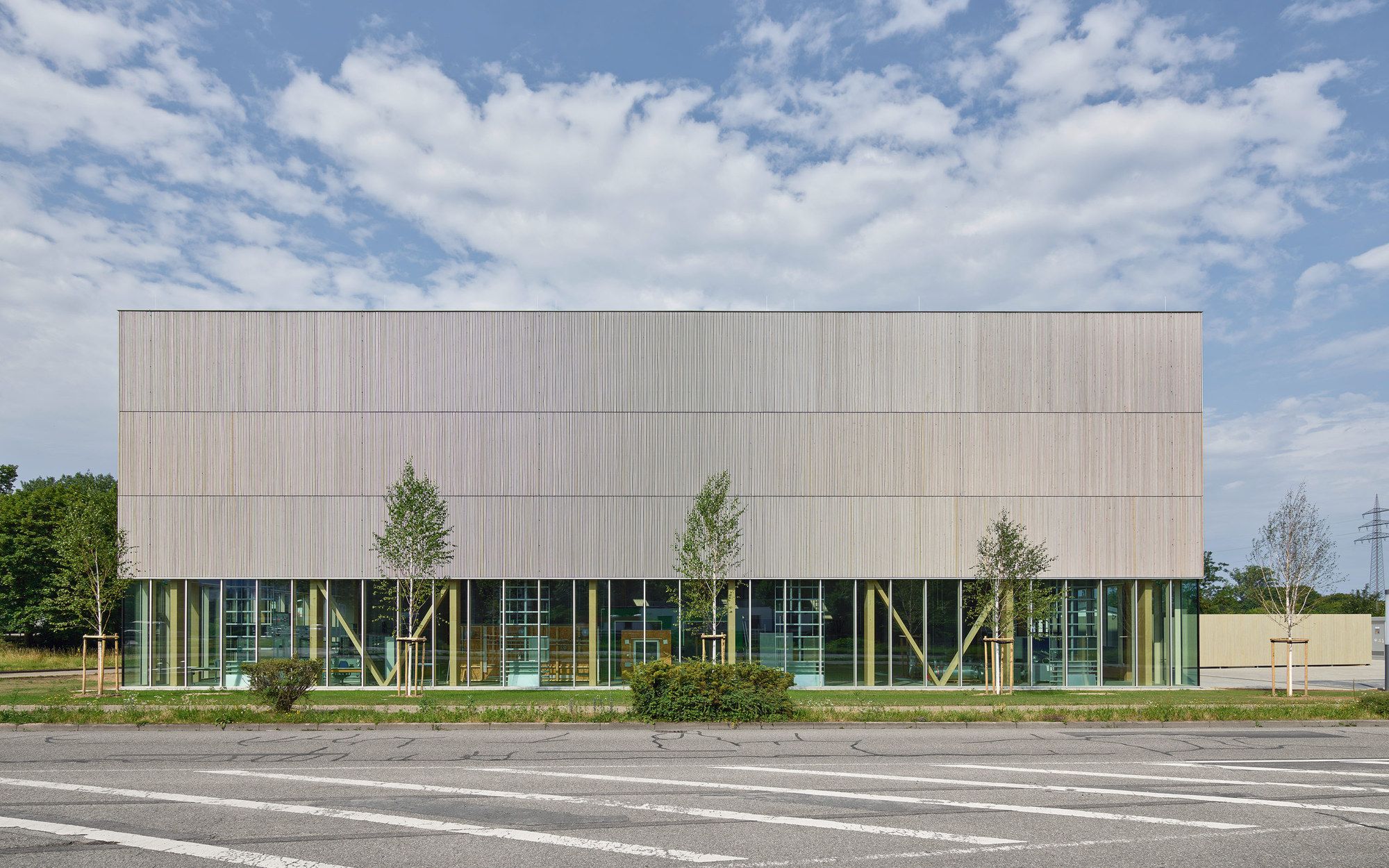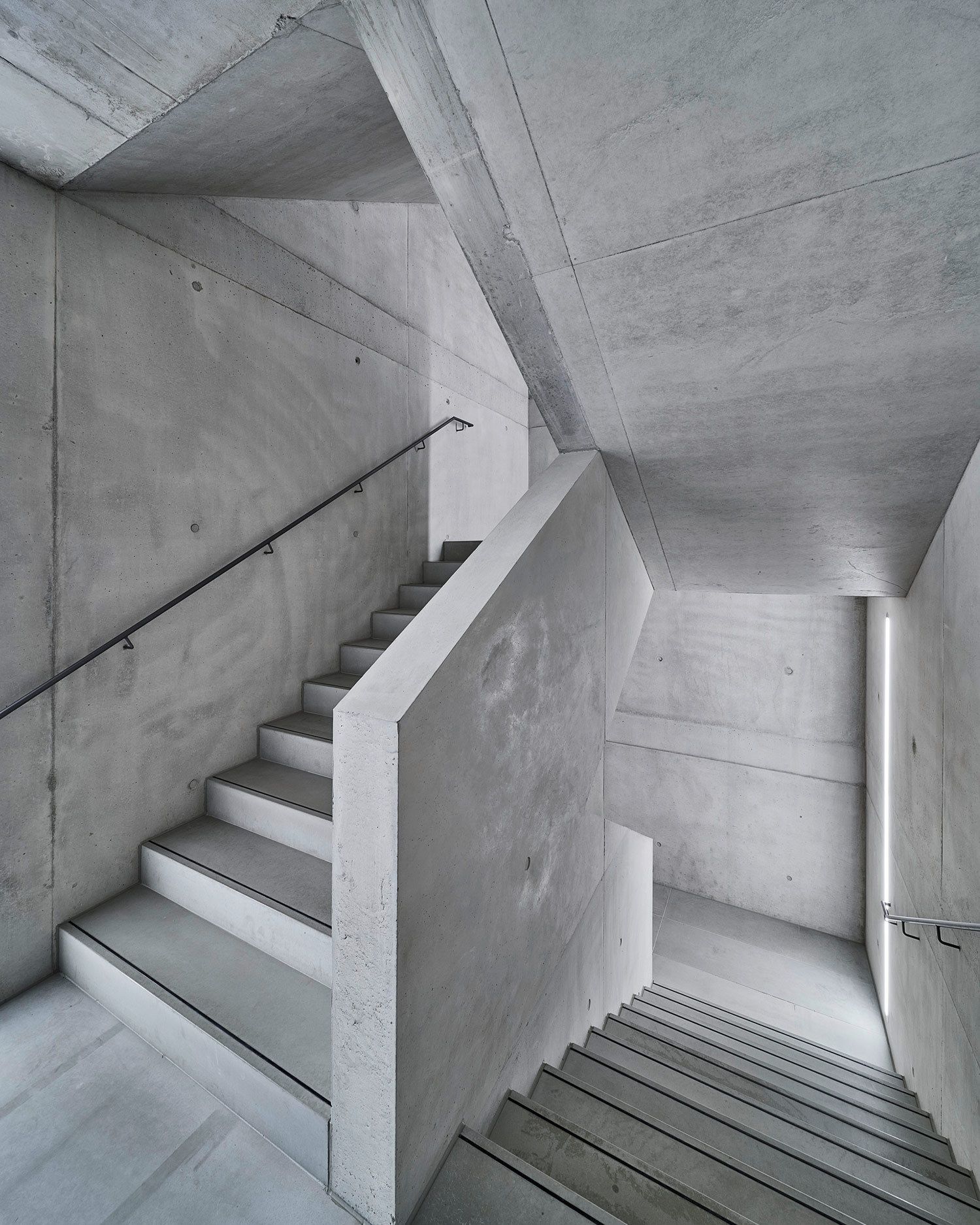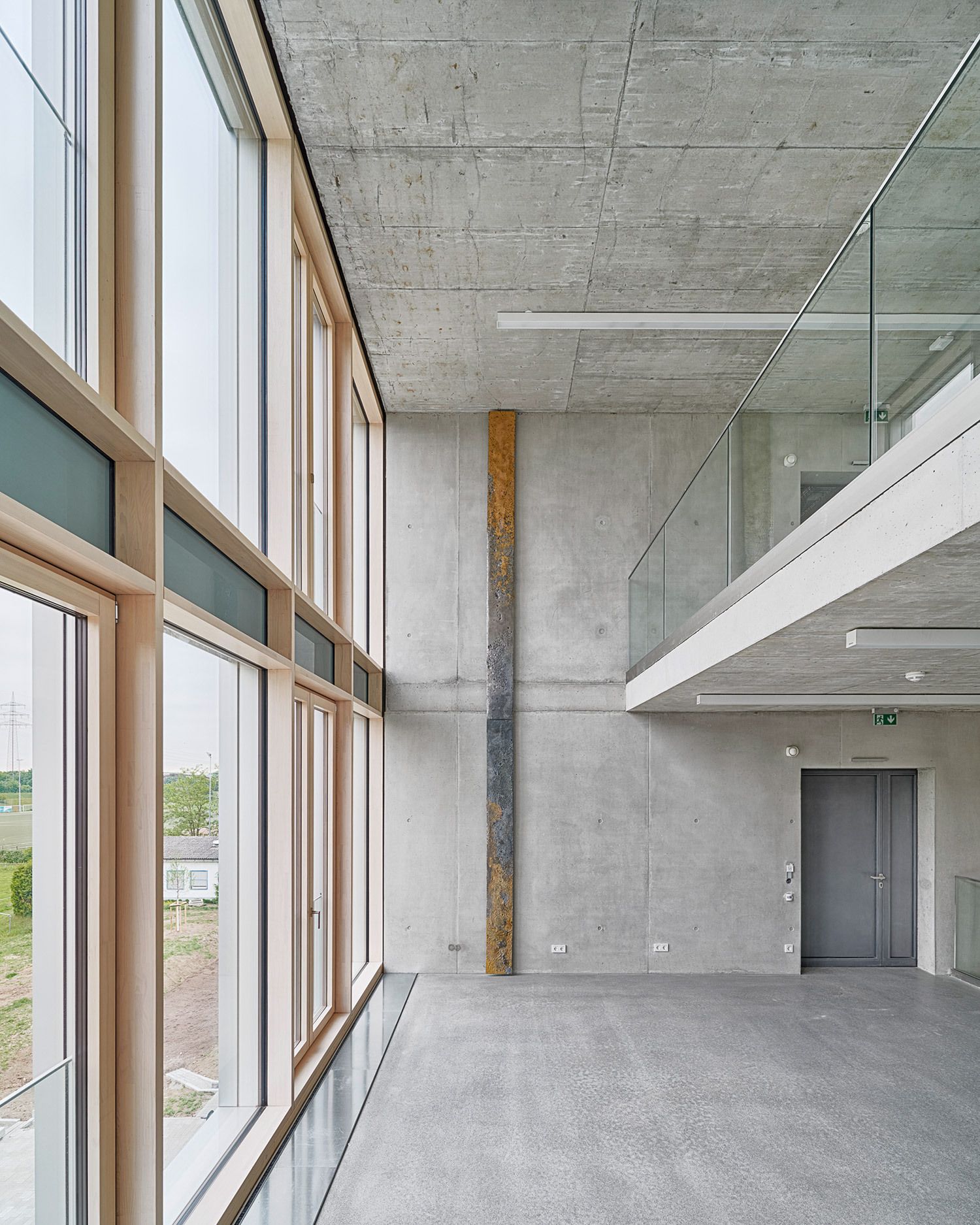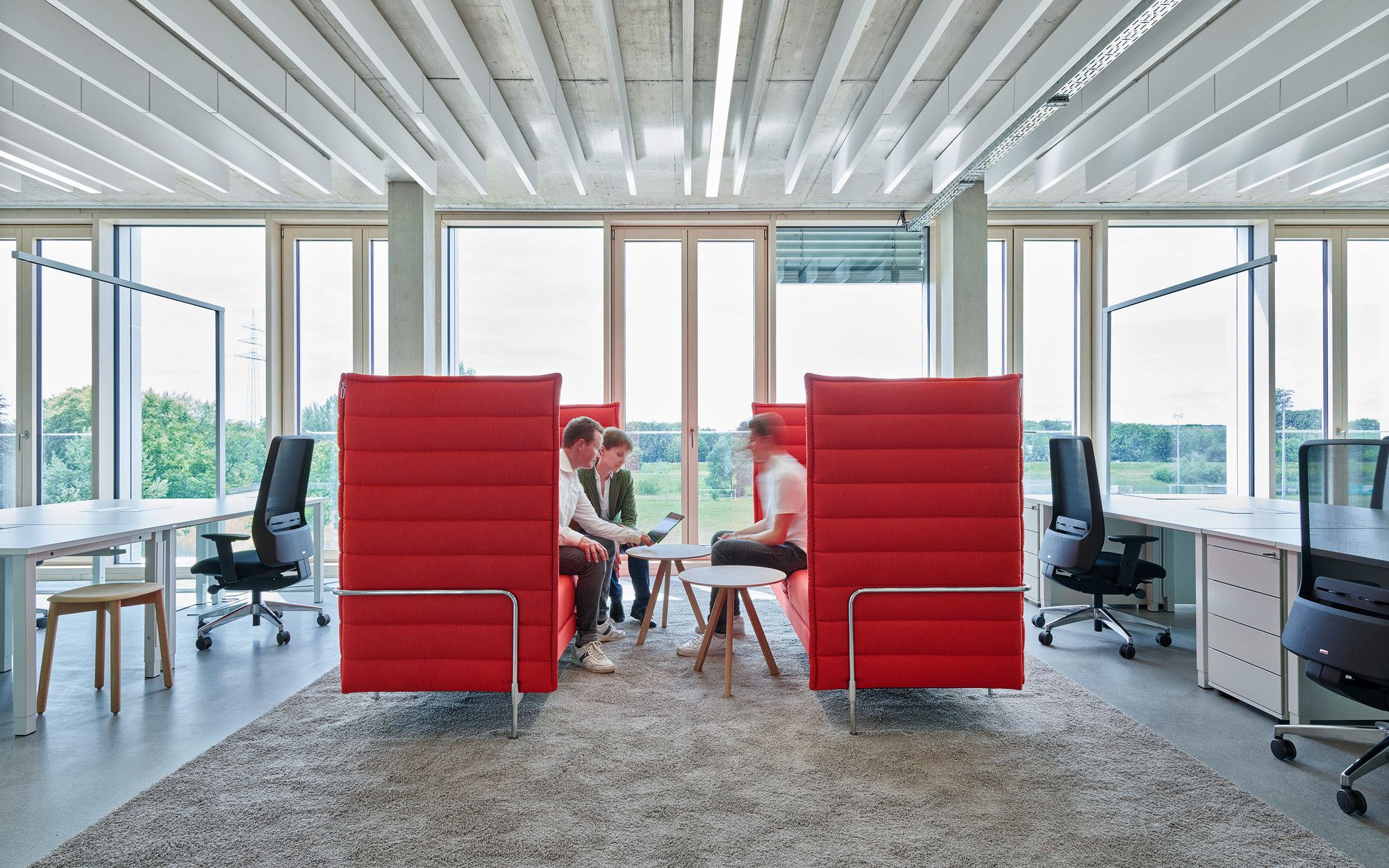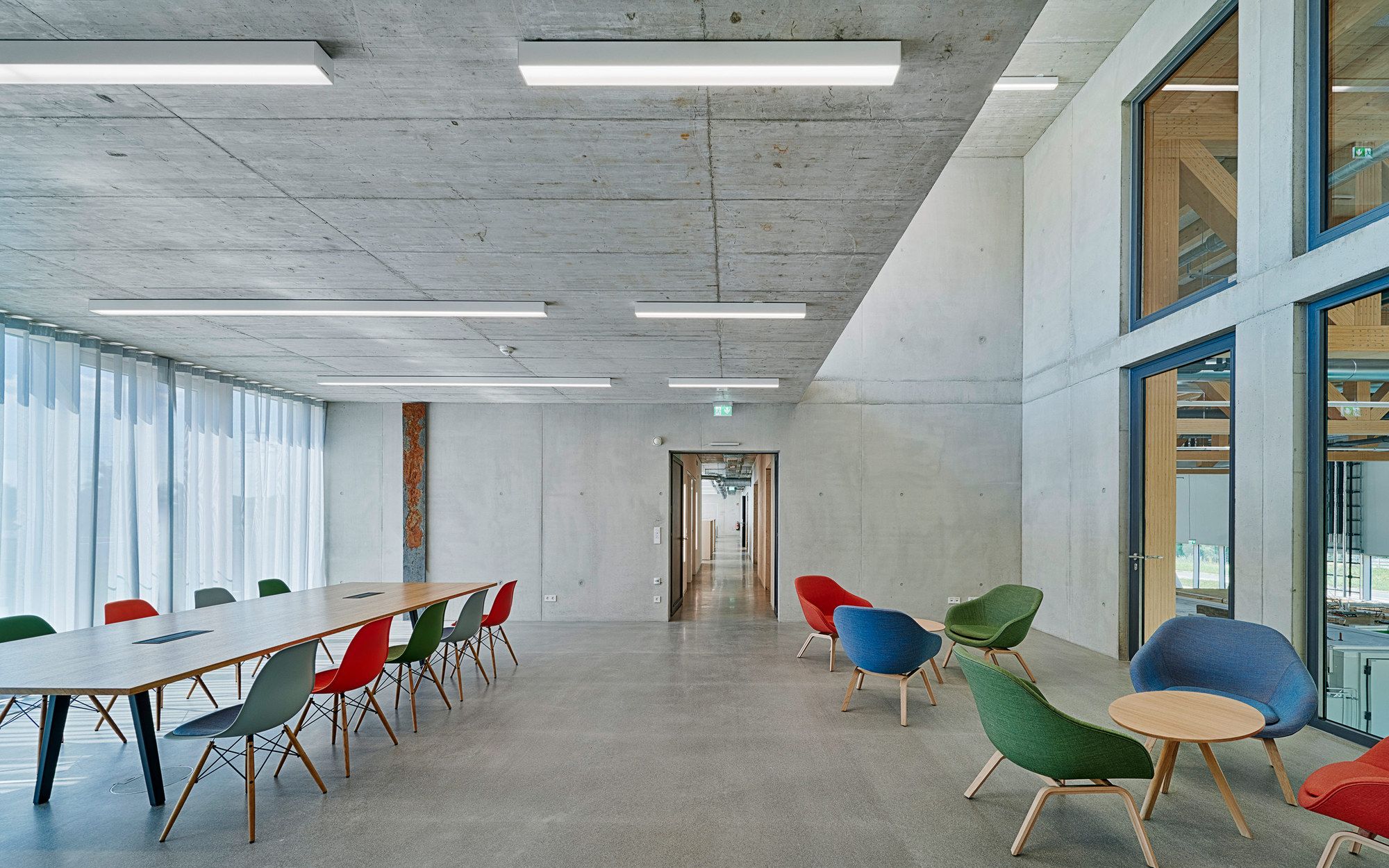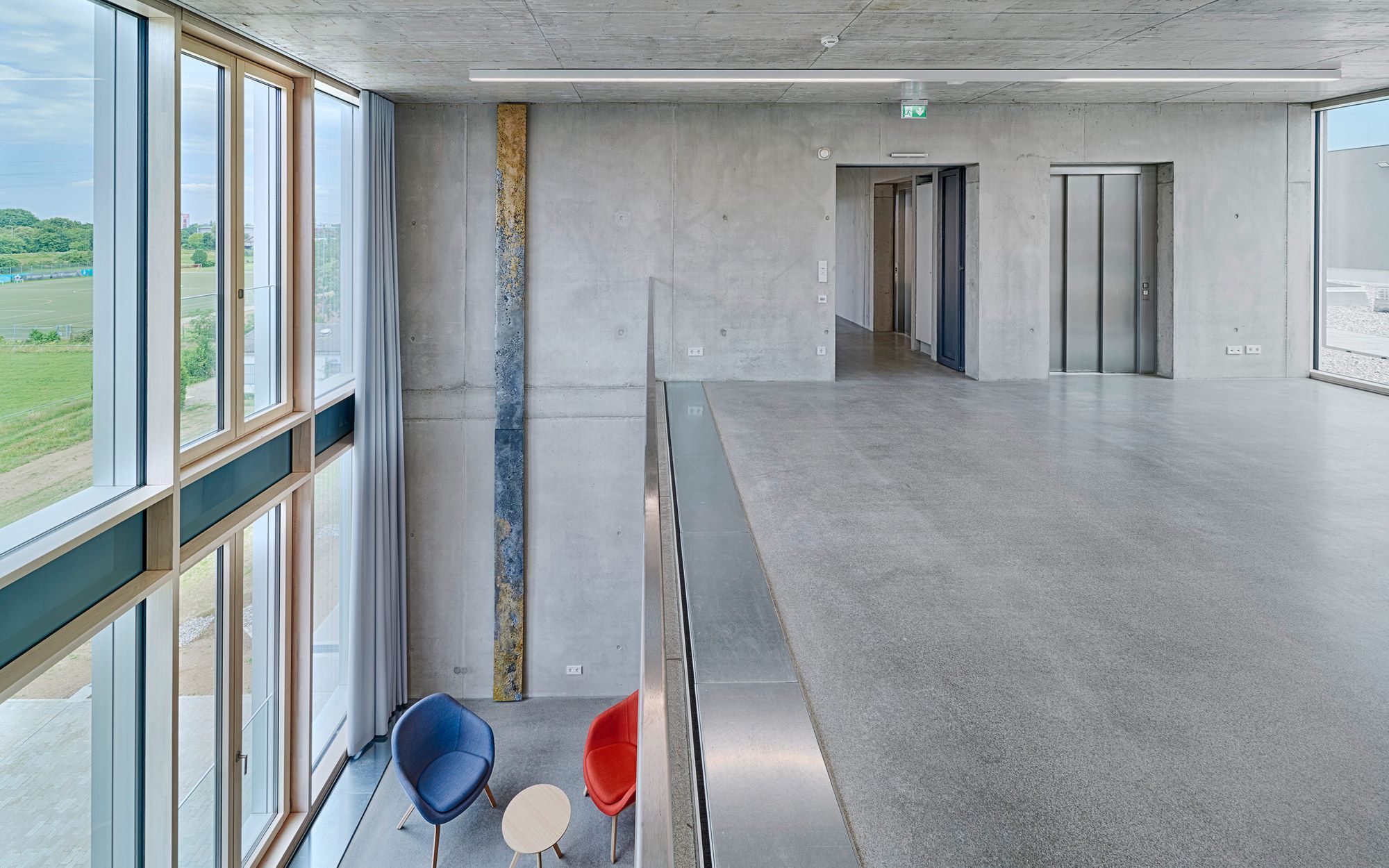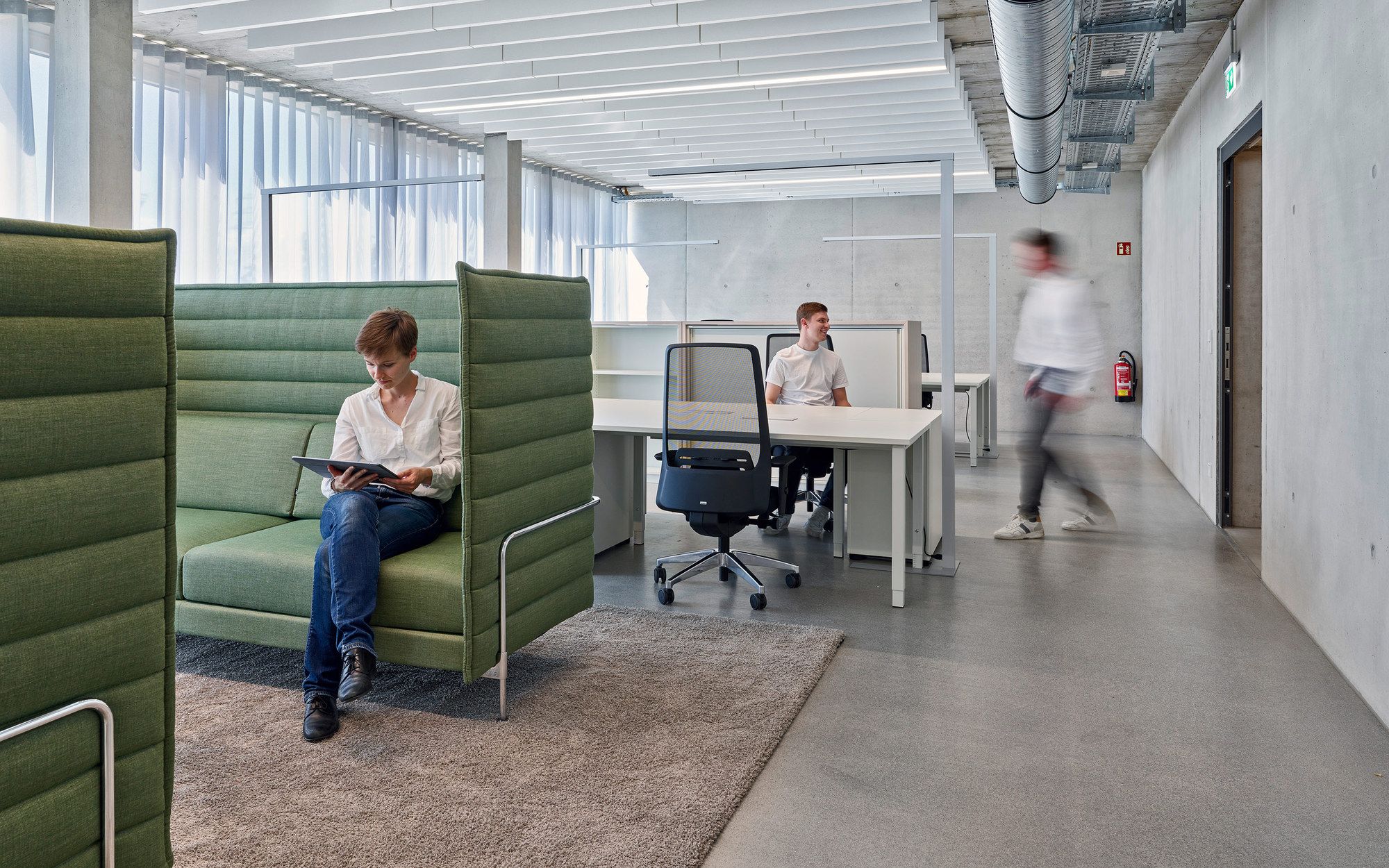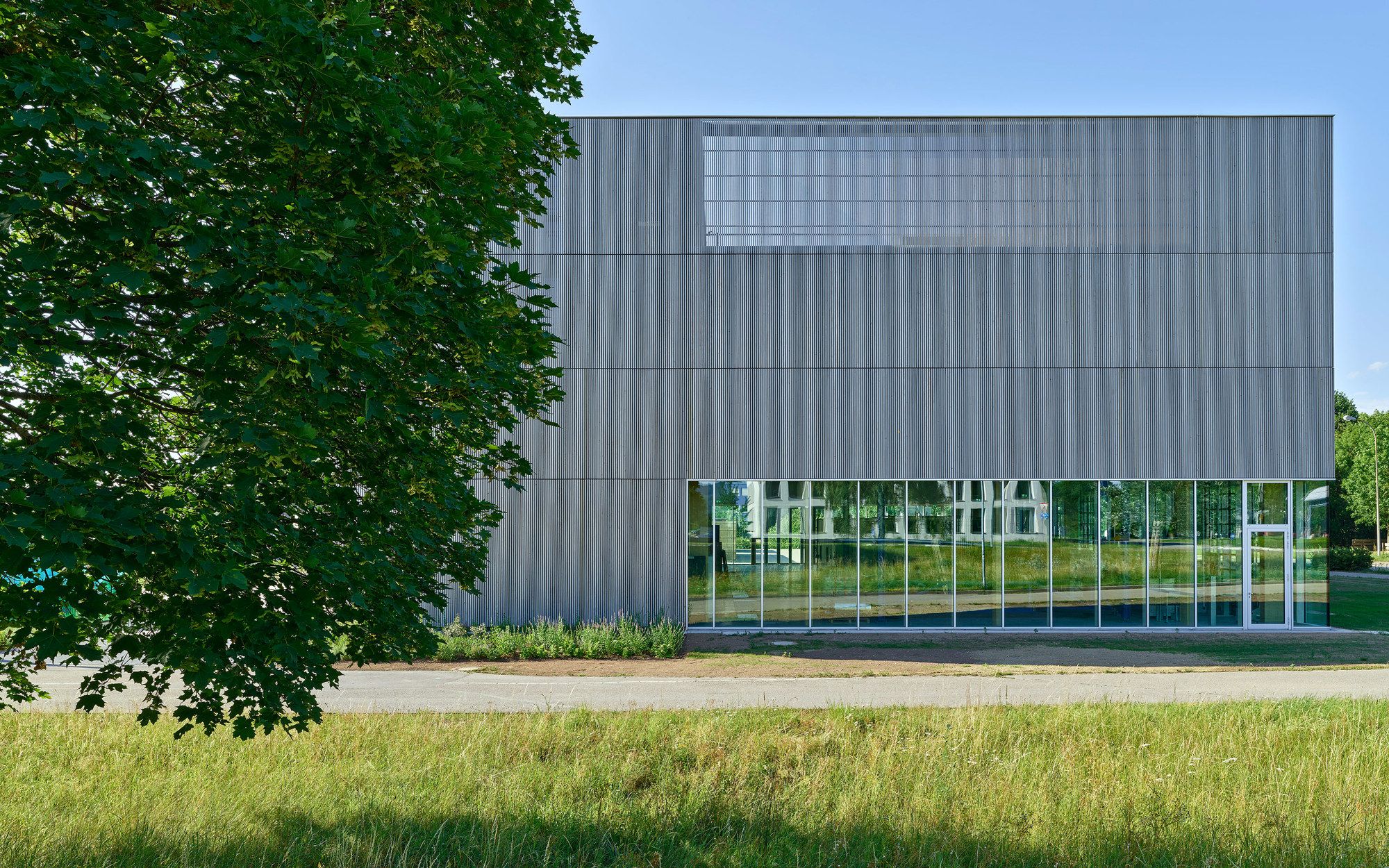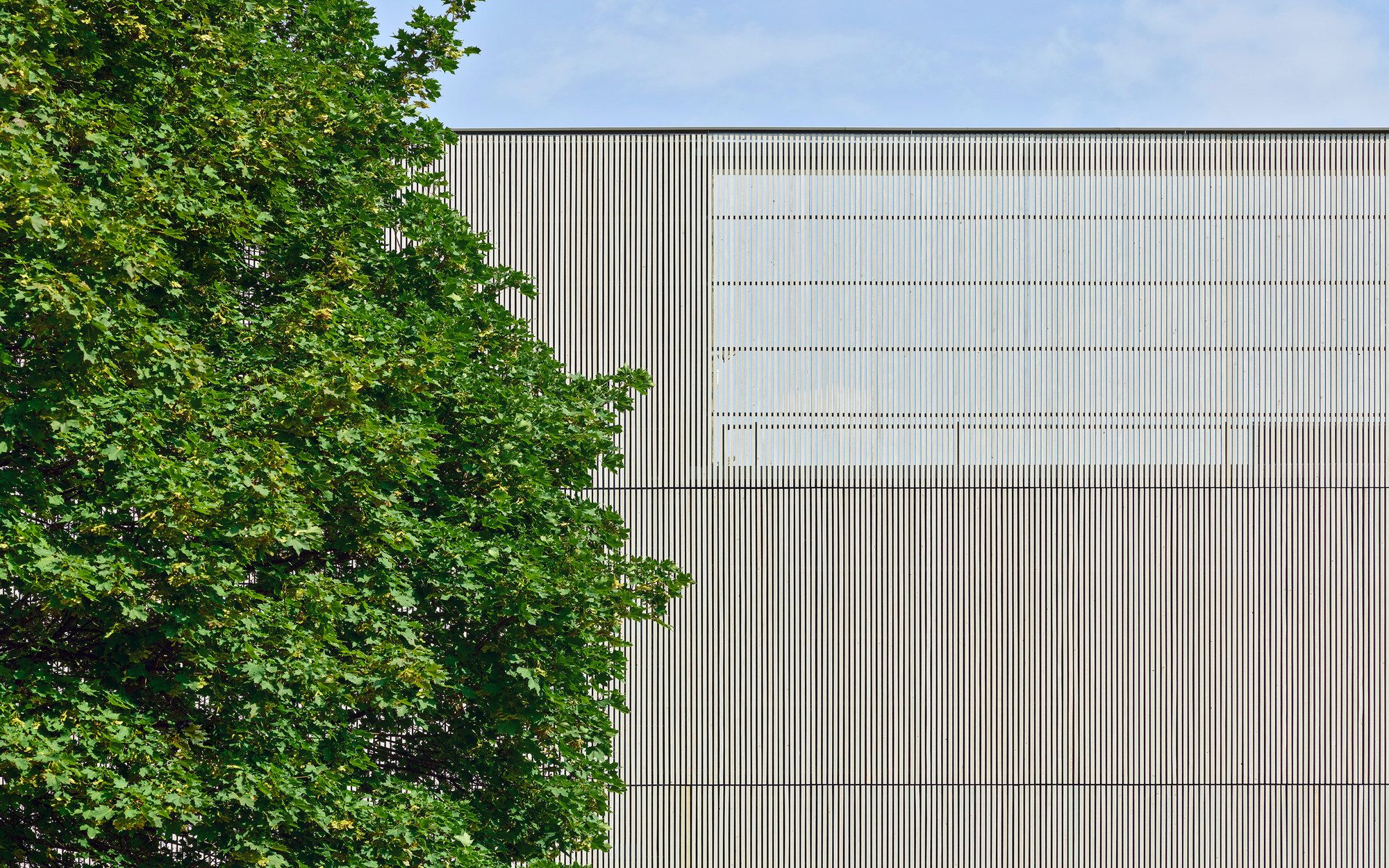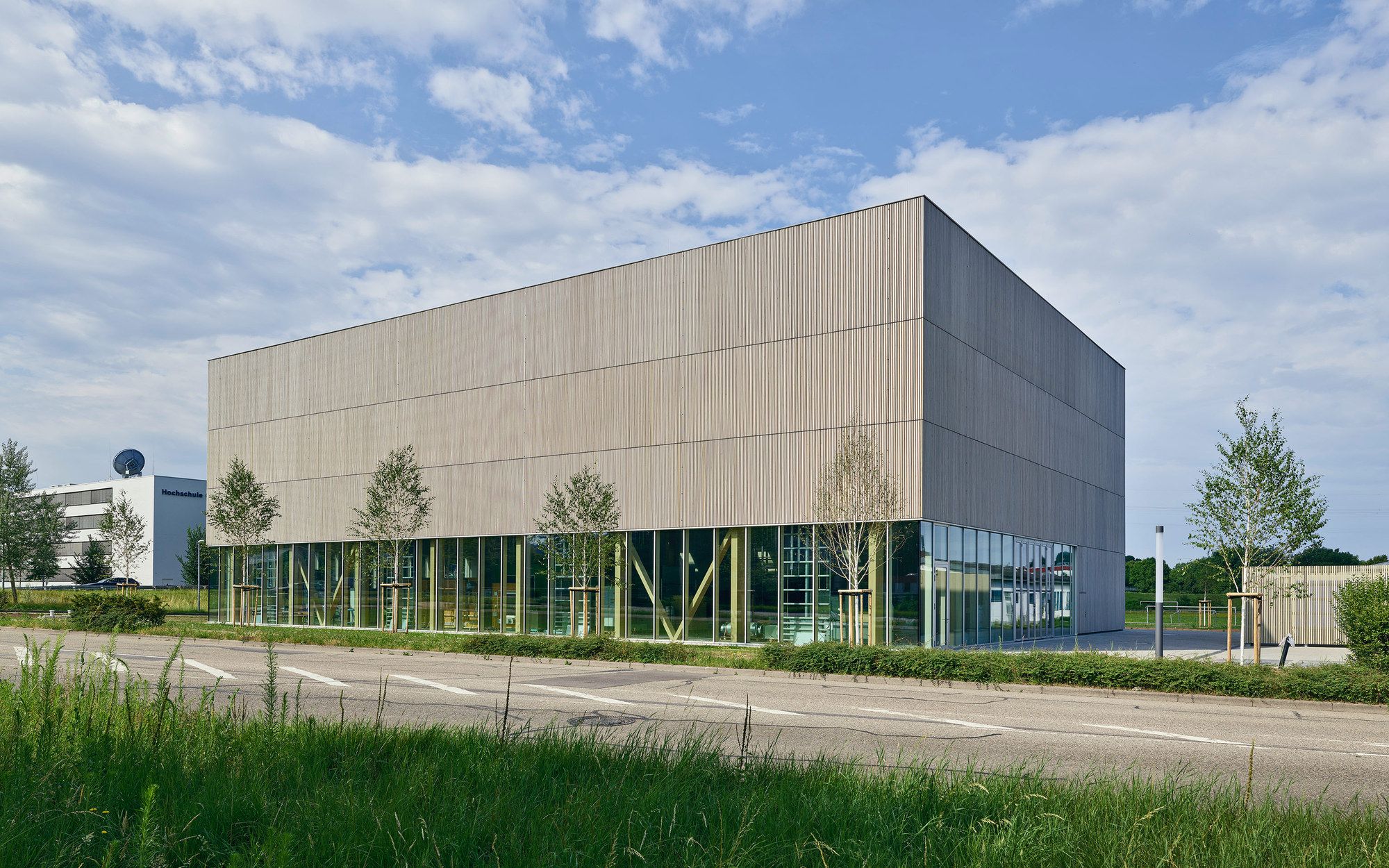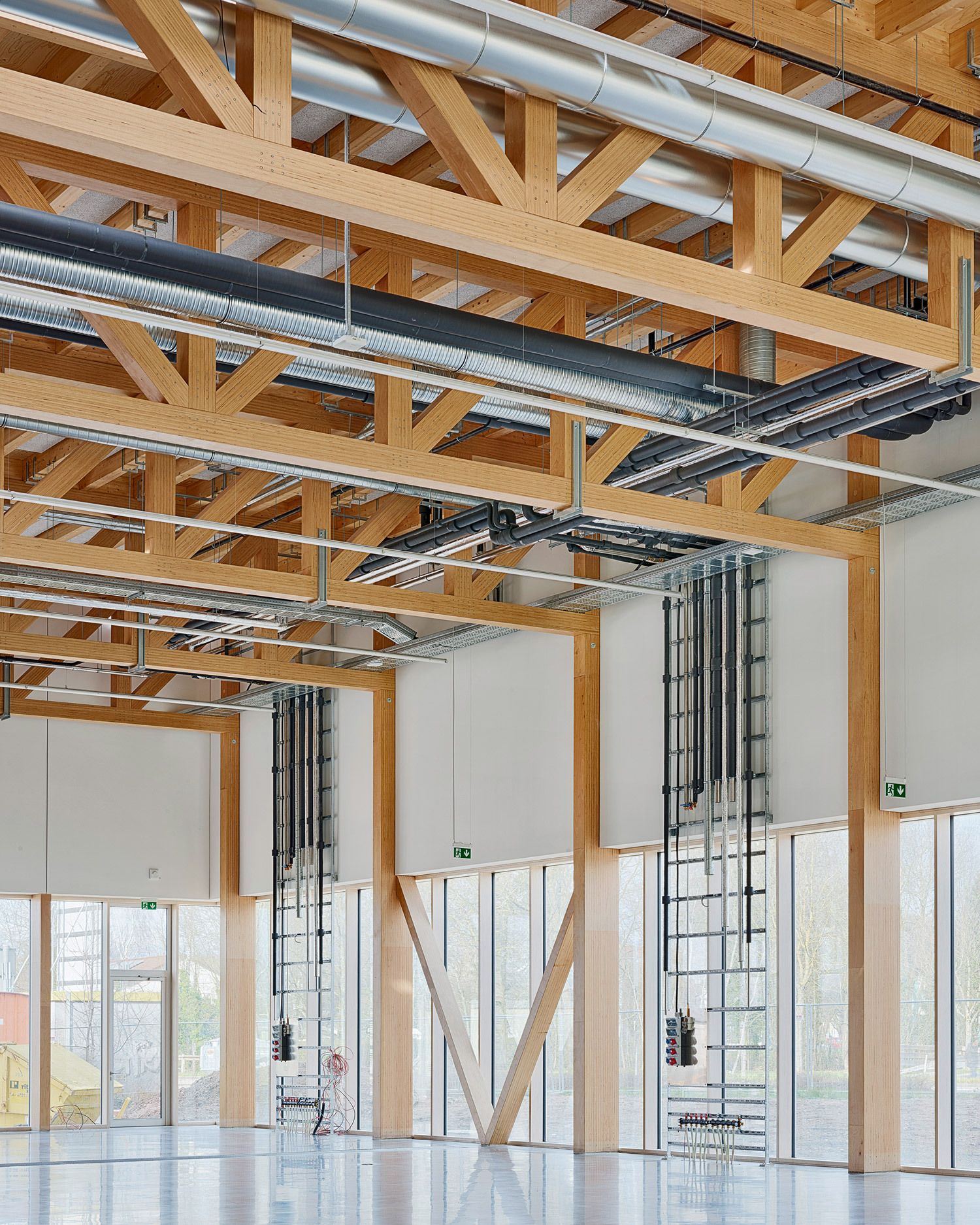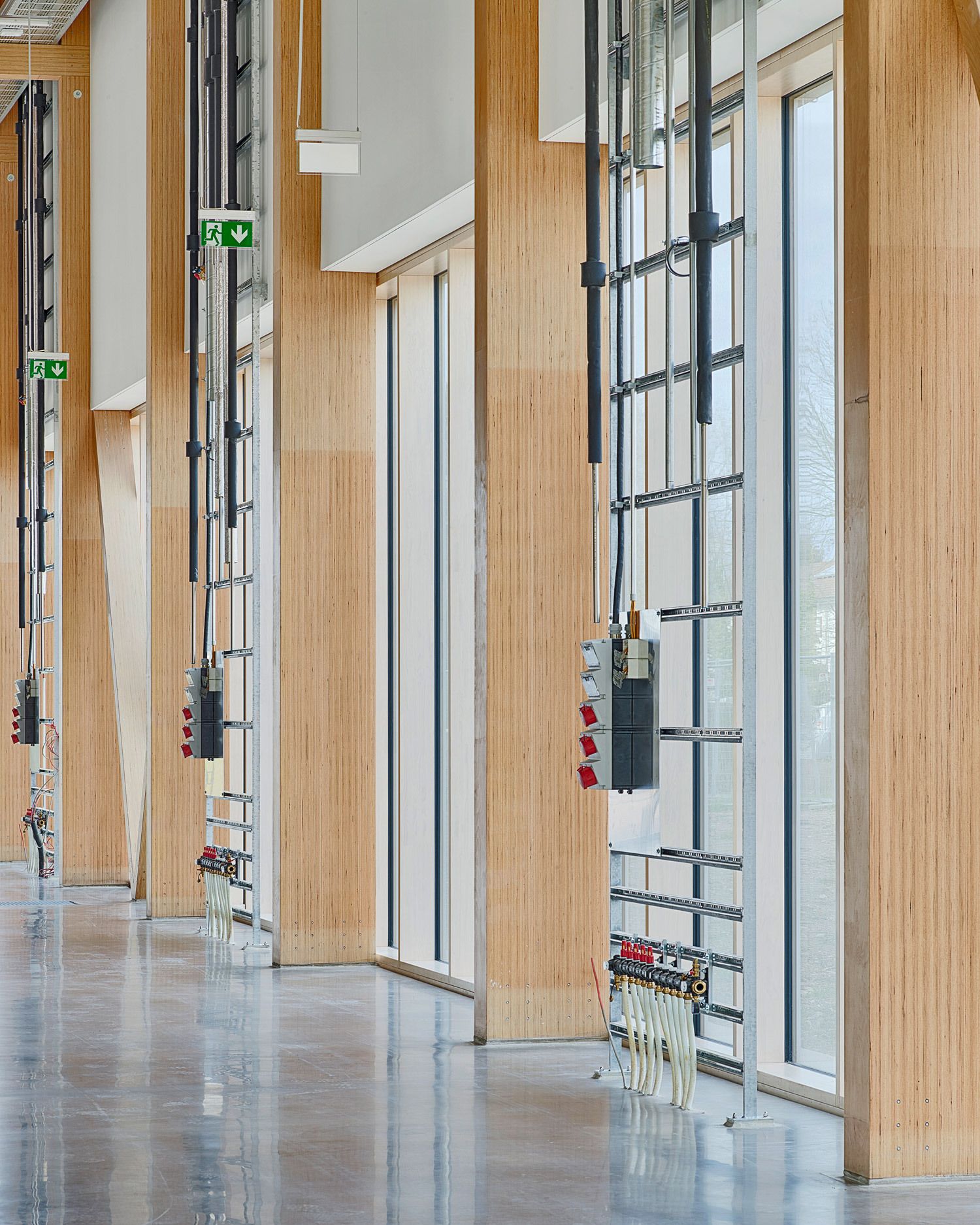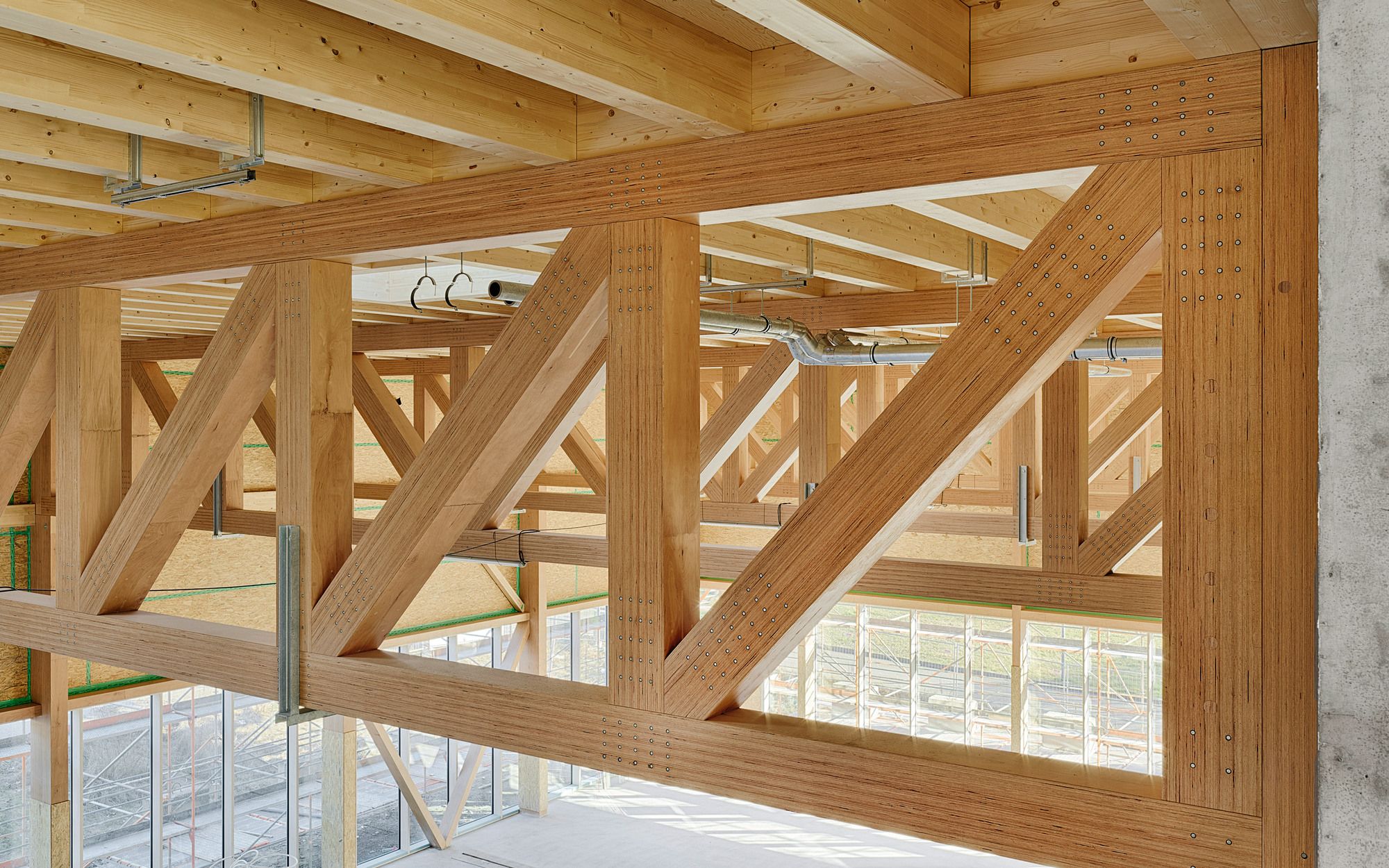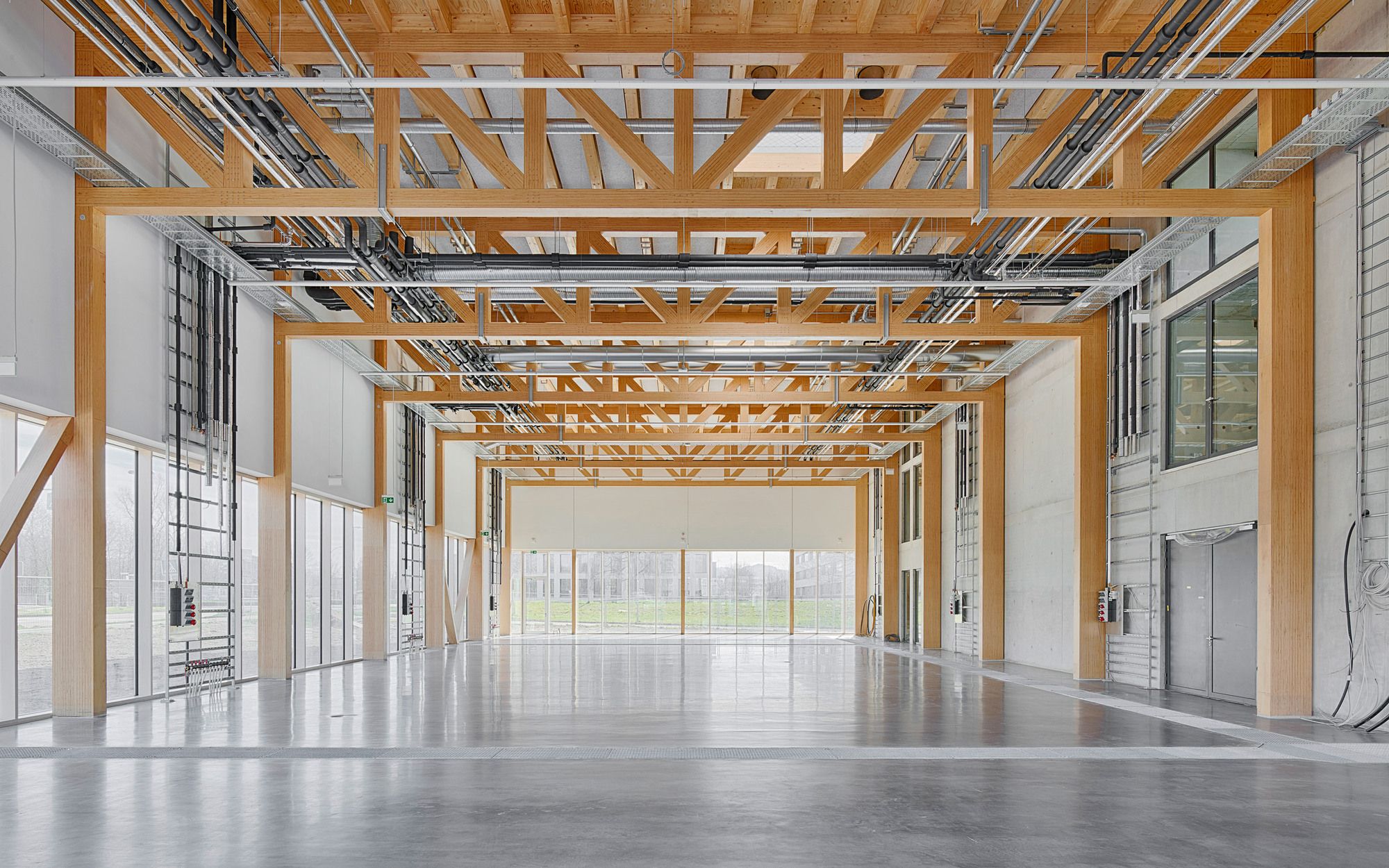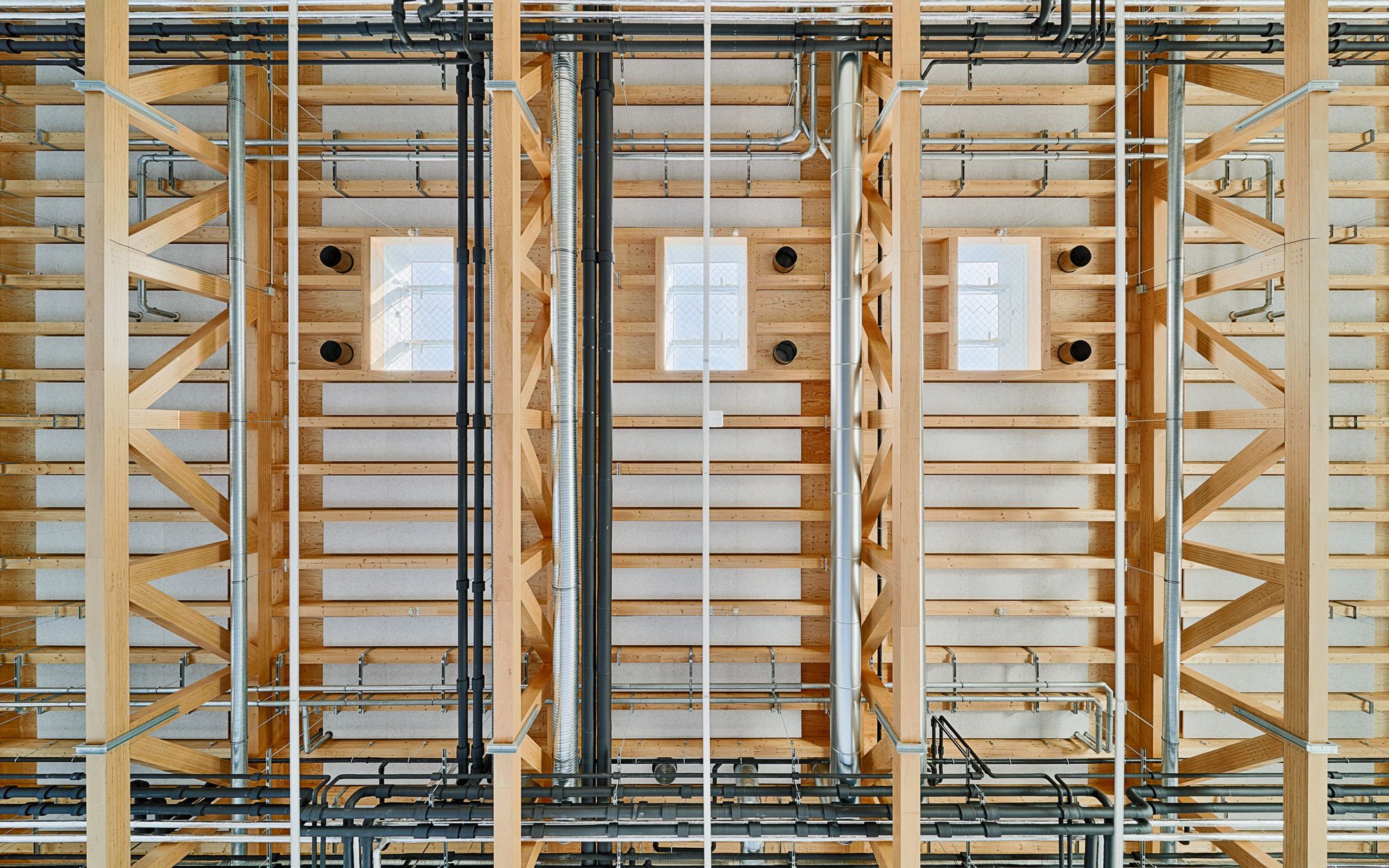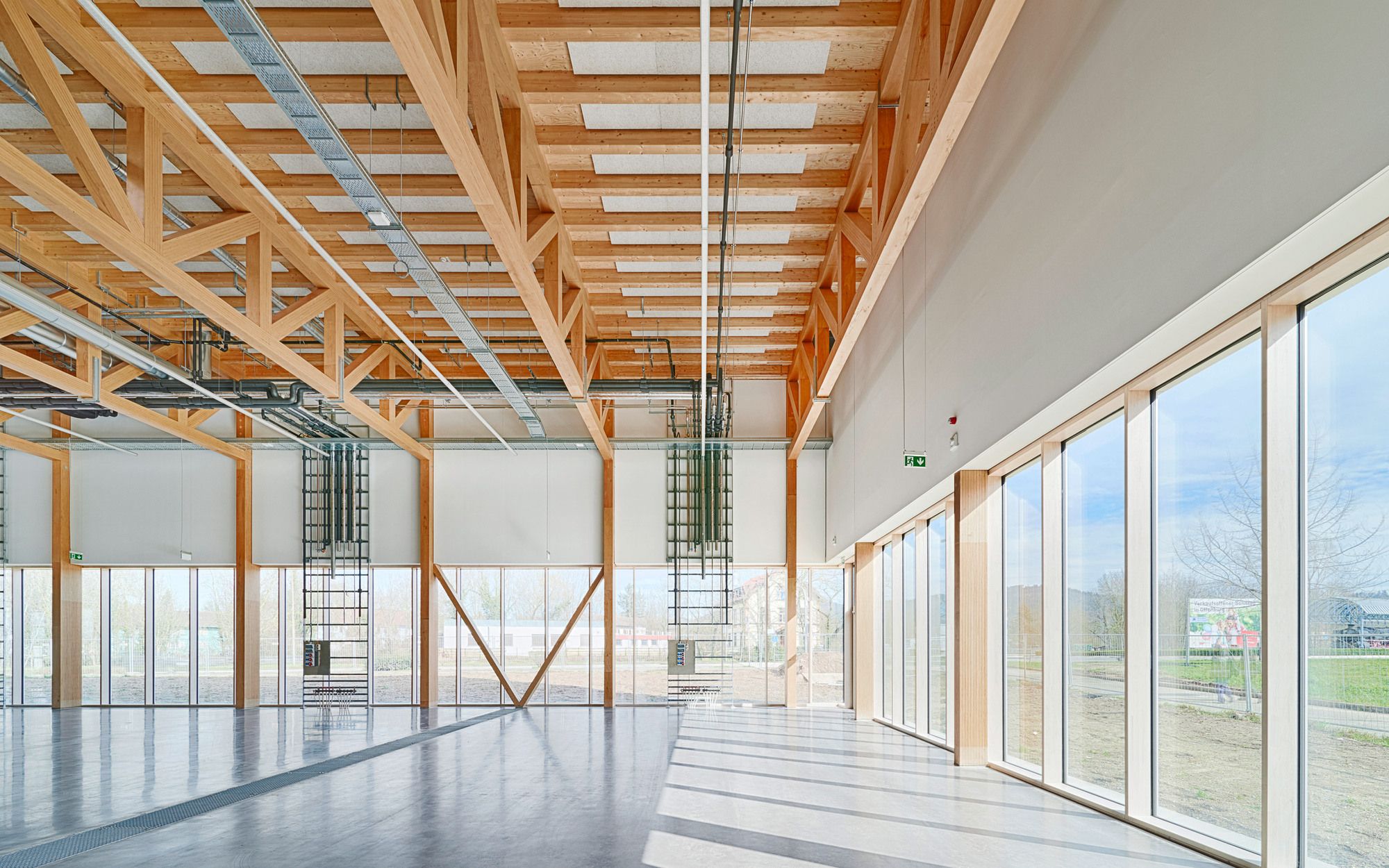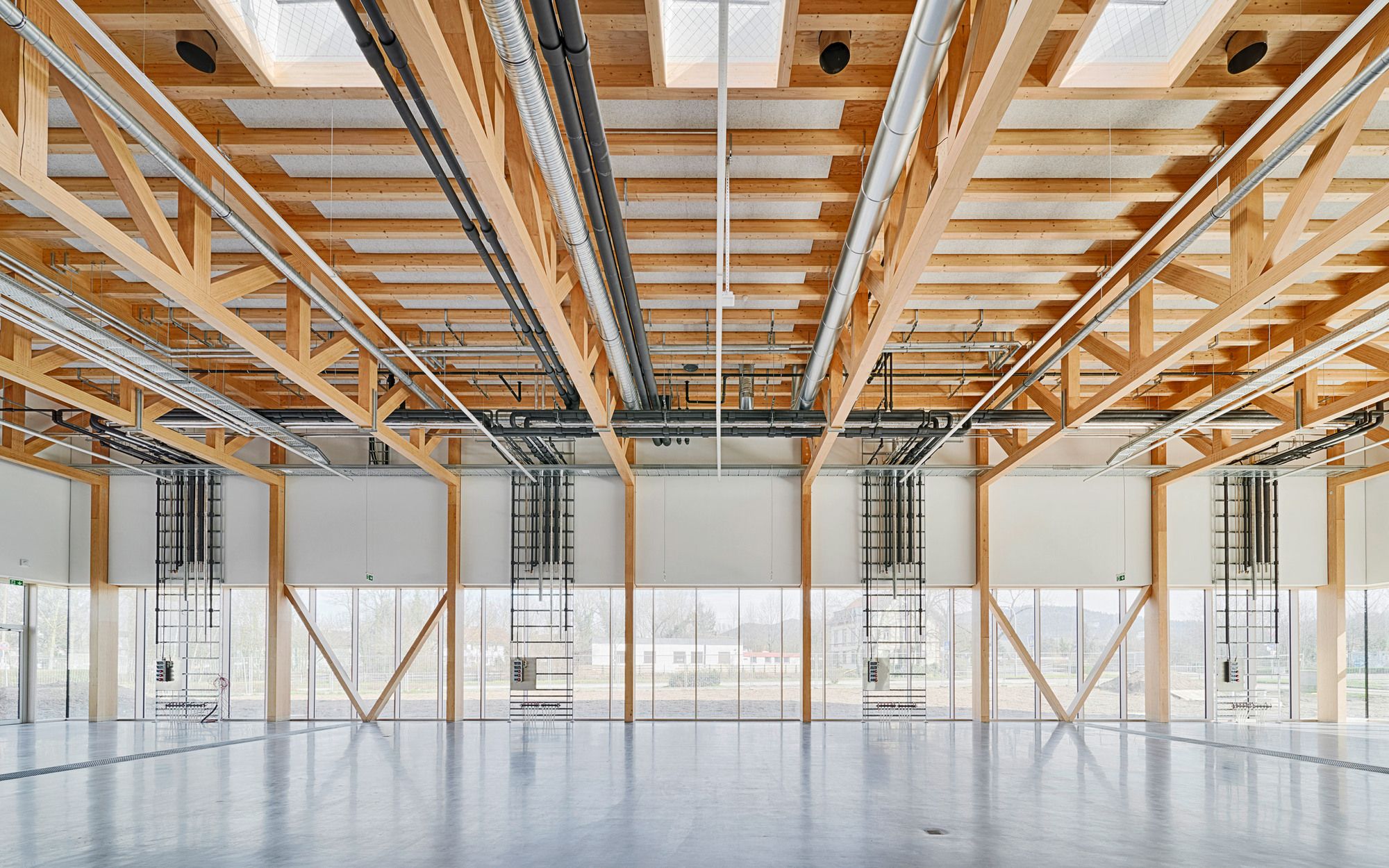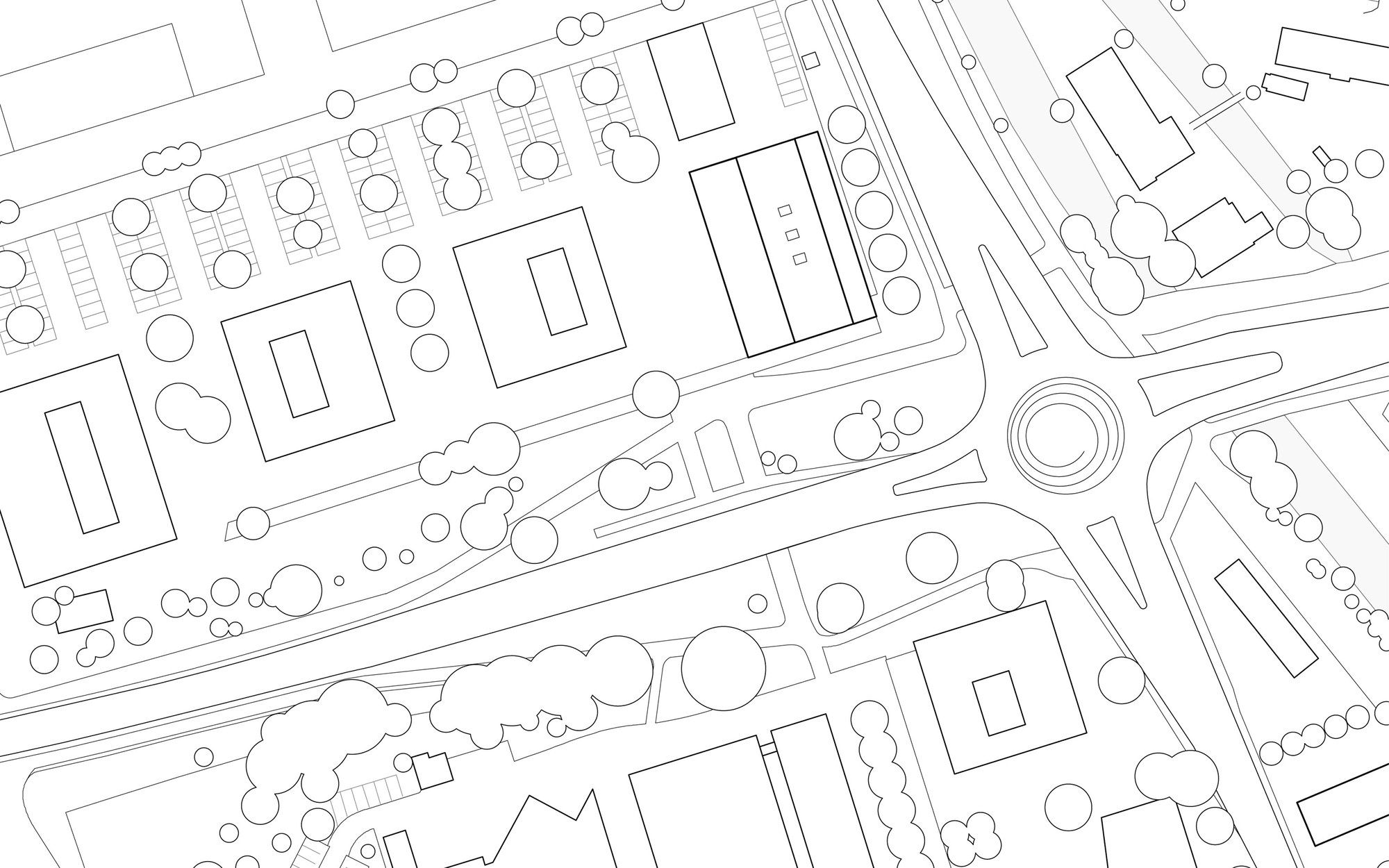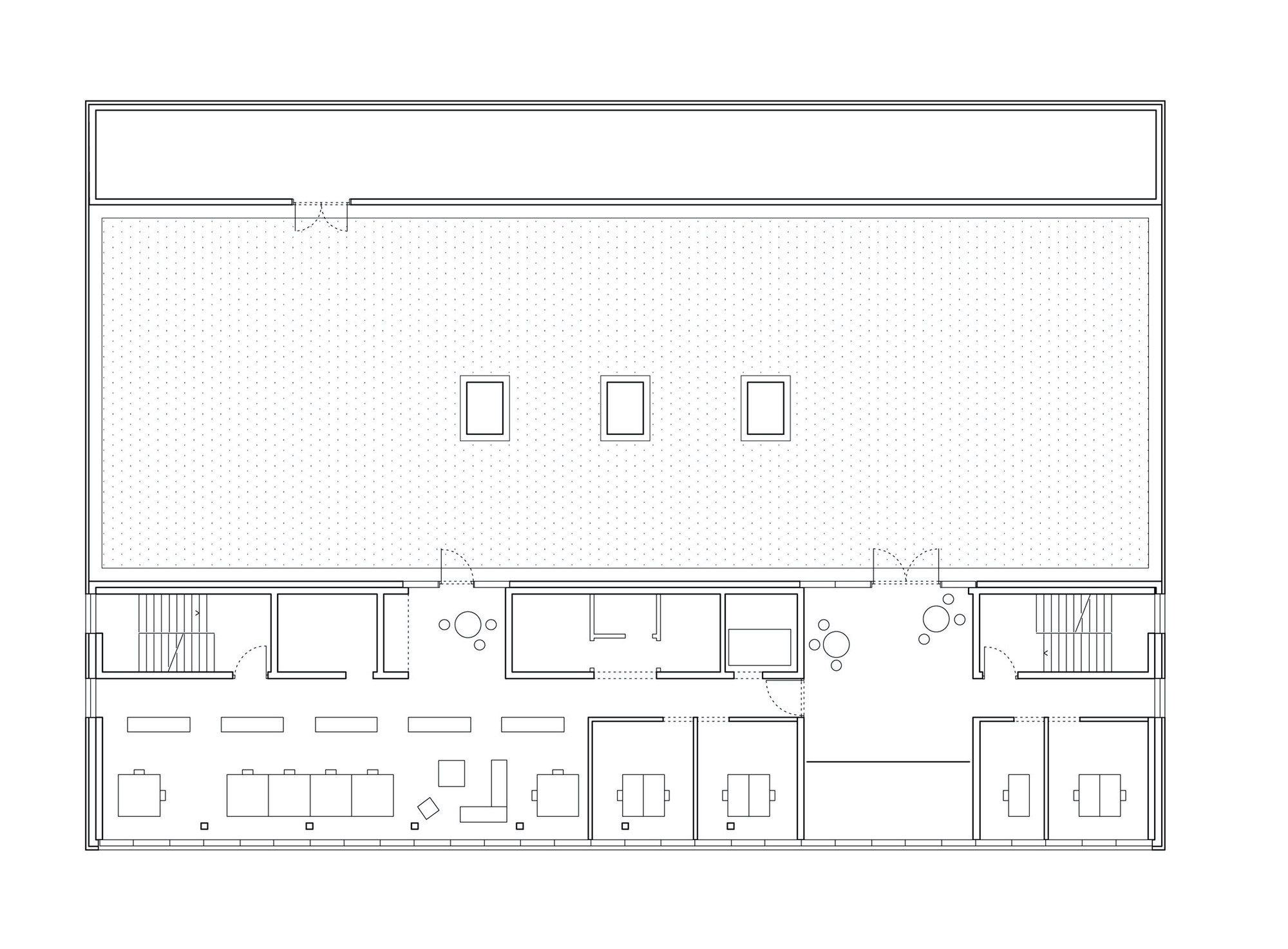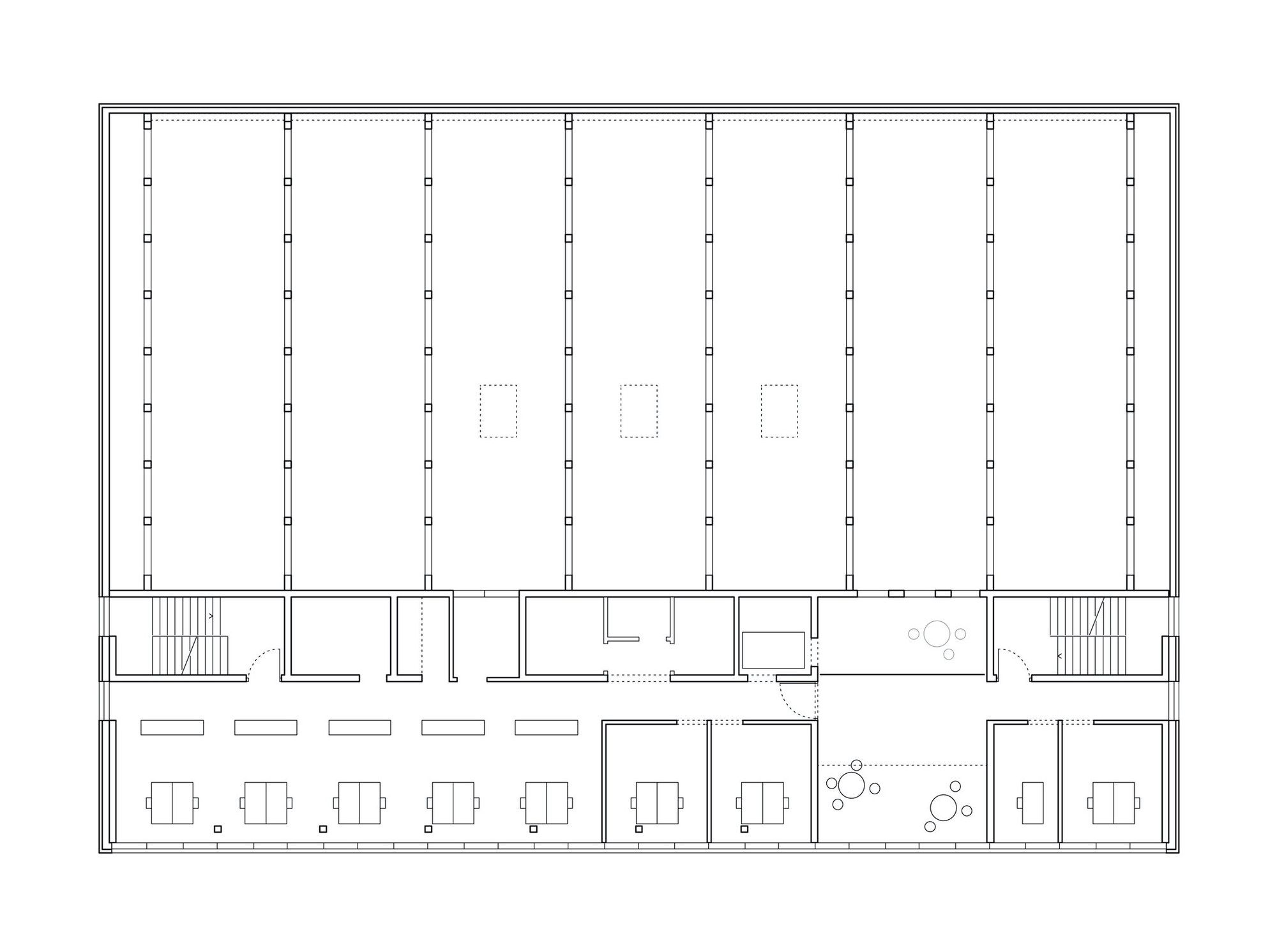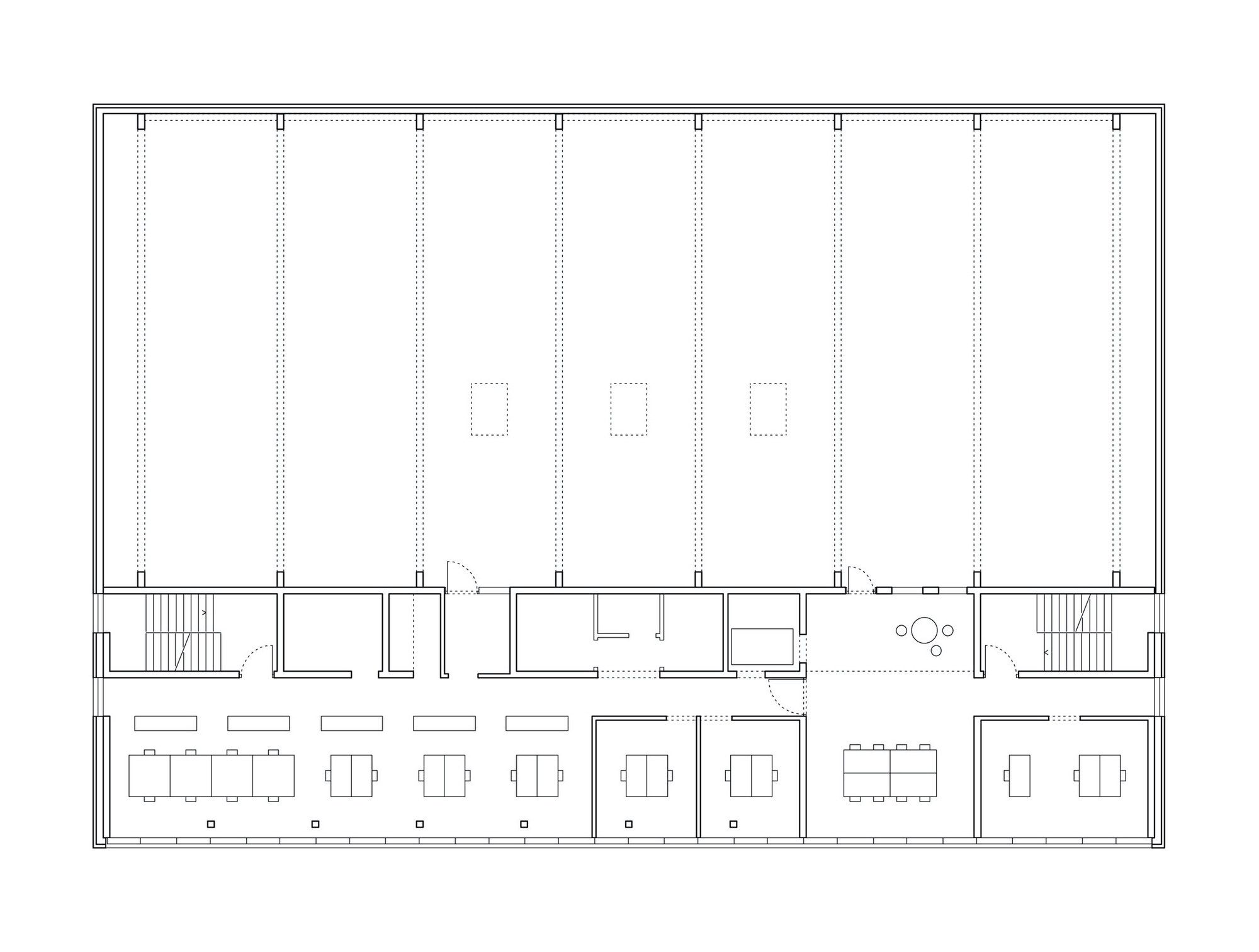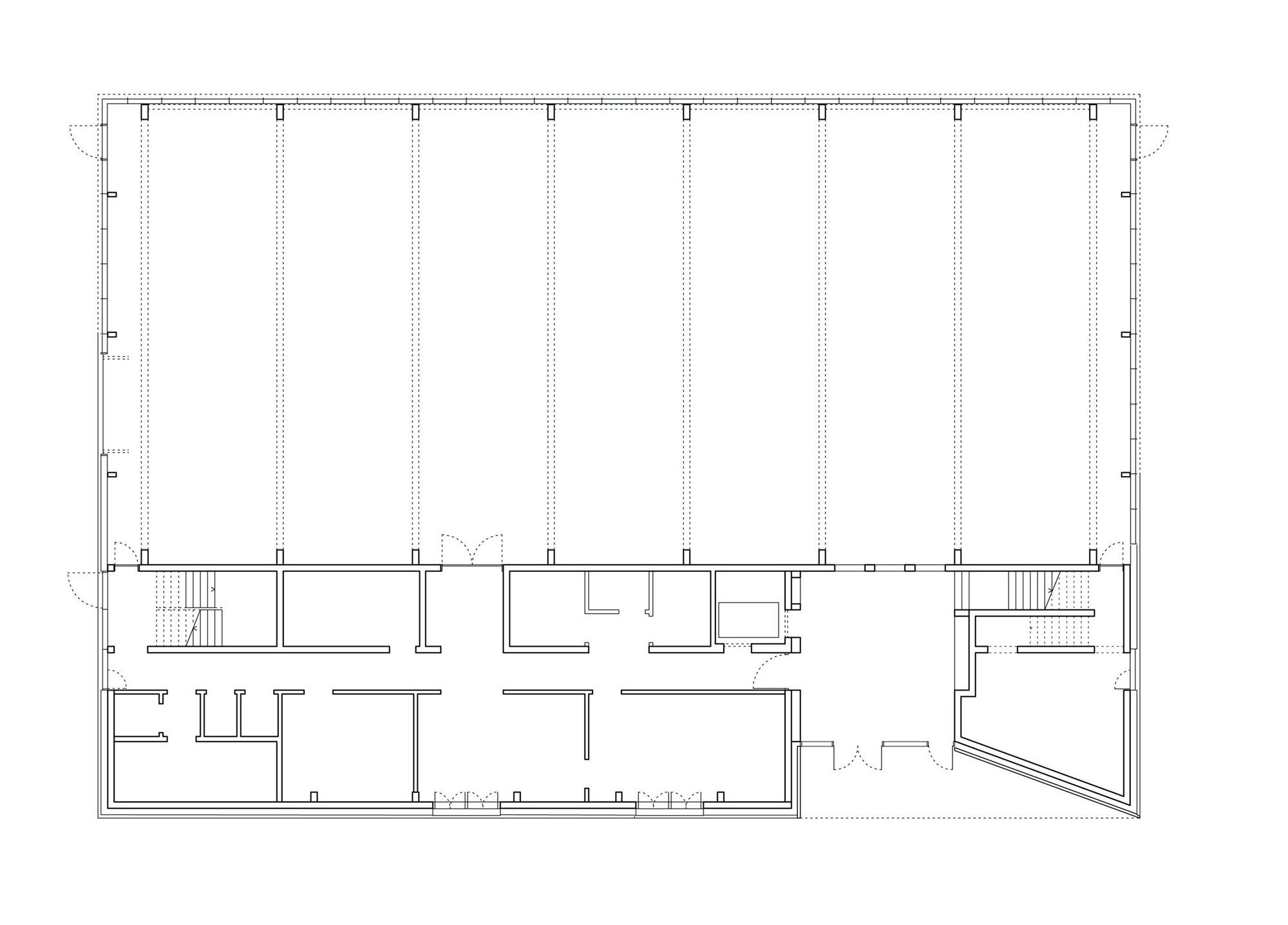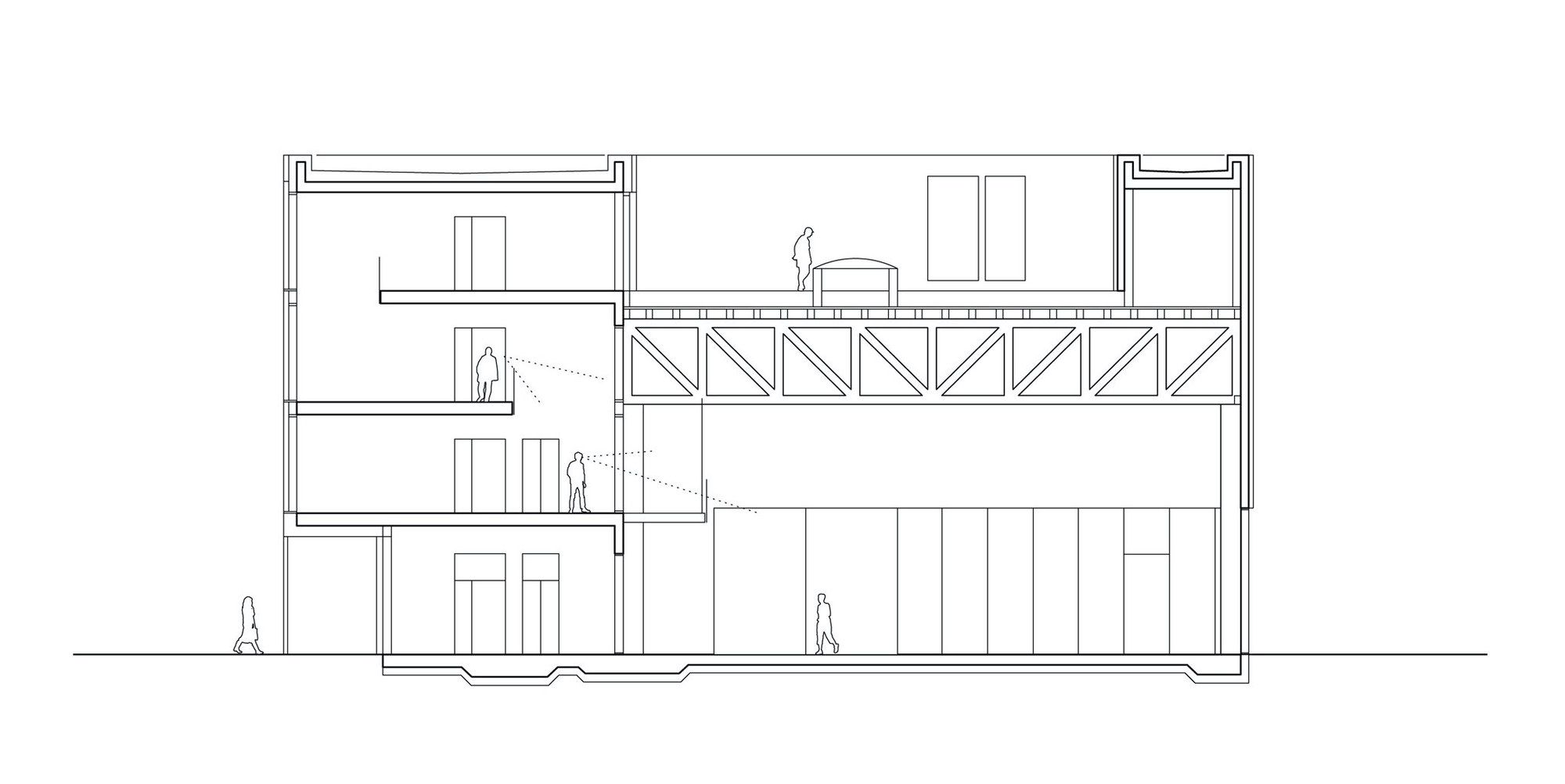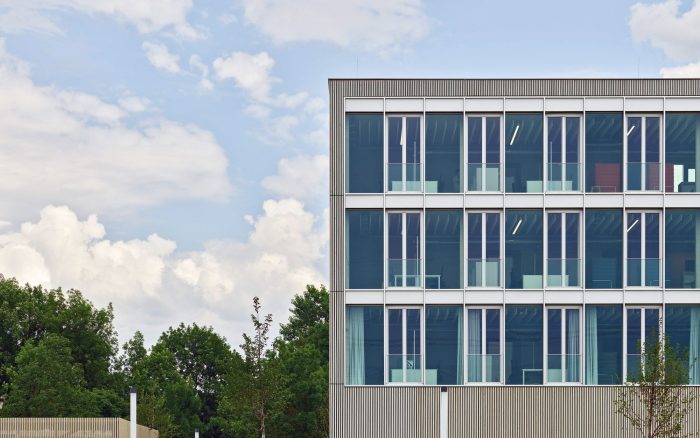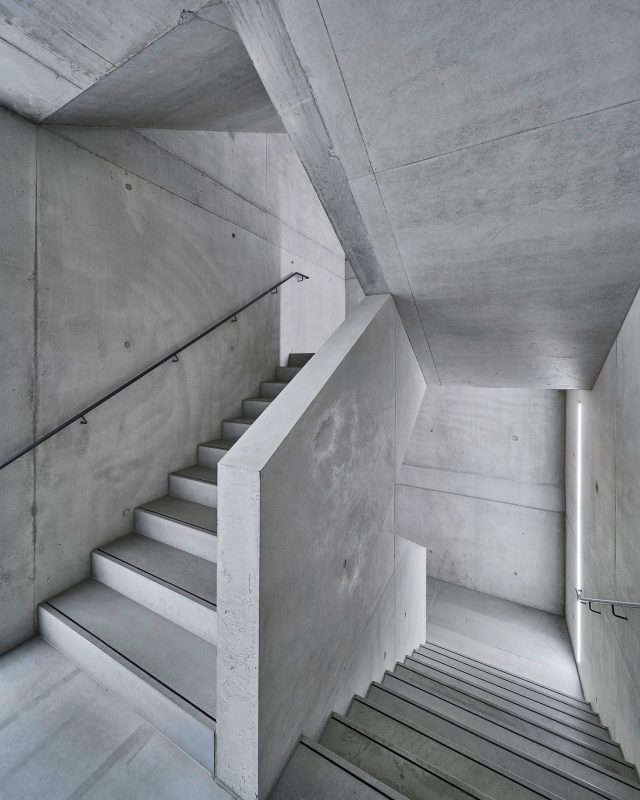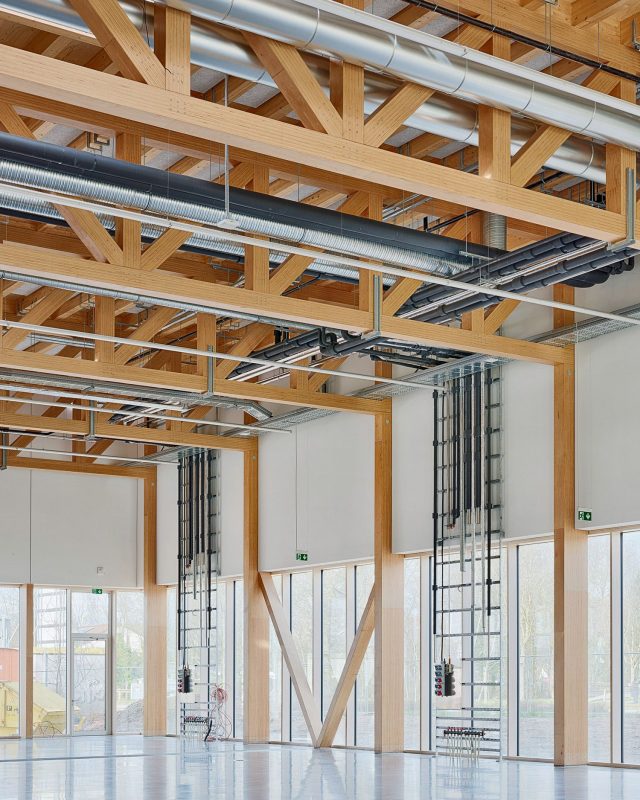RIZ Regional Innovation Center for Energy Technology
The clear-cut building volume of the Regional Innovation Centre for Energy Technology (RIZ) at the street corner Badstraße / Südring marks the entrance to the new campus. Towards Badstraße, the building appears as a largely closed structure, whilst in the west, a large open façade faces the future North Campus. A generous, angled recess on the west façade guides pedestrians approaching from the old campus through the underpass to the main entrance. The building comprises a multi-storey research wing with offices and a directly adjacent test. The office workplaces are located in a clearly structured room cluster that faces west, overlooking the campus and the nearby Kinzig. Located between the technical centre and the research workplaces is an area of circulation and ancillary rooms that repeatedly provides views into the hall.
Lines-of-sight connecting the campus outside with the hall inside emphasize the dialogue and the solidarity of an interdisciplinary team of researchers. As a special feature, so-called research zones were created in the office wing, which are connected via voids and stretch across the three upper floors. This results in a vertically floating space that allows for flexible occupation and offers various lines-of-sight. On the roof is an outdoor lab that can be accessed directly from the building. Pillars and truss girders made of local beech form the supporting structure of the technical centre; the span is around 18m.
Laminated beech veneer wood is a high strength building material. Applied in space trusses and subjected to normal force, it is highly efficient and represents a sustainable solution that fully meets the requirements of this forward-looking research institution. For the façade, wood appeared to be the consistent continuation of the material canon. The outer walls are of passive house quality, they are designed as a timber frame construction, clad with grey varnished scantling of silver fir. Integral planning of the building design and the energy concept focused on energy efficiency, high quality workplaces and an innovative laboratory concept. In the offices, occupants benefit from the option to regulate room temperature, ventilation, glare and sun protection individually.
This guarantees high visual, acoustic, and thermal comfort with good indoor air quality. The building’s heating and cooling requirements are supplied by groundwater from a suction-injection well. Ground water is used as a heat source for an electric heat pump in winter and for cooling during summertime. To use the environmental energy efficiently for heating and cooling the concept includes a concrete core activation. In the office wing the ceilings are activated, whilst in the technical centre the floor slab is activated. The building meets the passive house standard, featuring a highly insulated building envelope and mechanical ventilation. The ventilation system operates with low electrical energy consumption for the fans and a high degree of heat supply from the heat recovery system. A photovoltaic system on the roof of the office wing uses as much renewable energy that the primary energy requirements according to German EnEV are undercut by around 70 %.
Project Info:
Architects: Birk Heilmeyer und Frenzel Gesellschaft von Architekten
Location: Offenburg, Germany
Area: 2600 m²
Project Year: 2020
Photographs: Bernhard Strauss
Manufacturers: Chemotechnik, Forster, HAY, Interstuhl, Molto Luce, Nemetschek, VitrA, Warema, Zumtobel, Adobe, Assmann, Cration Baumann, Dura sidings, Göbes, Microsoft, ORCA, Schuco
